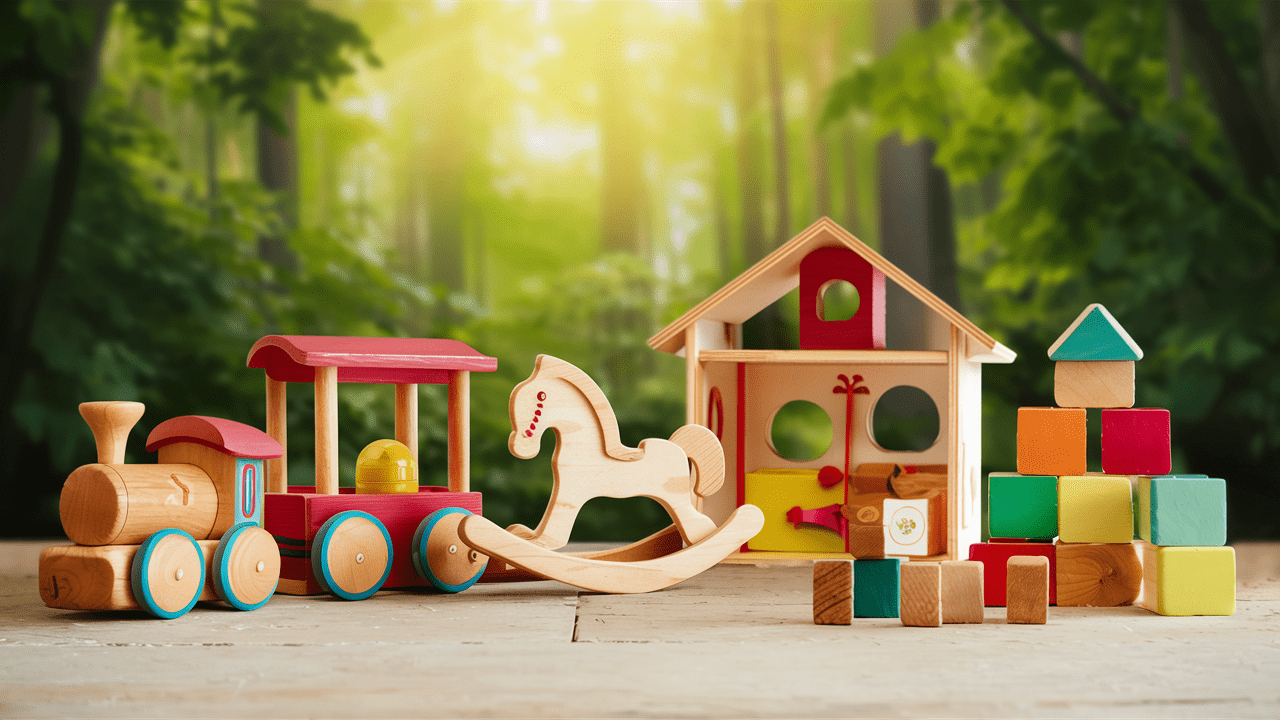Sustainable Toys
In recent years, there has been a growing awareness of the environmental impact of consumer products and toys are no exception.
The United States, being one of the largest markets for toys, has seen a significant shift towards sustainable practices in the toy industry.
Parents, educators and toy manufacturers are increasingly adopting eco-friendly options to ensure a greener future for the next generation.
In this post, we’ll explore why Sustainable Toys are important, highlight some eco-friendly toy options and provide tips for parents looking to make greener choices for their children’s playtime.
The Importance of Sustainable Toys for a Great Future
Toys play a crucial role in the development of children, offering not just entertainment but also aiding in cognitive development, motor skills and social interactions.
However, the traditional toy manufacturing process often involves the use of plastics and other materials that can be harmful to the environment. These toys, when discarded, contribute to landfill waste and pollution, posing a threat to wildlife and ecosystems.
Sustainable toys, on the other hand, are designed with environmental and social responsibility in mind. They are typically made from natural, biodegradable or recycled materials and are manufactured through processes that minimize environmental impact.
By choosing sustainable toys, parents can reduce their carbon footprint, support ethical labor practices and instill values of environmental stewardship in their children.

Eco-Friendly Toy Options
Wooden Toys: Timeless and durable, wooden toys are a fantastic sustainable option. Look for toys made from FSC-certified wood (Forest Stewardship Council), which ensures the material has been sourced from responsibly managed forests. Wooden toys are not only biodegradable but also typically require less energy to produce than their plastic counterparts.
Recycled Plastic Toys: While plastic is generally less eco-friendly, some toys made from recycled plastics offer a more sustainable alternative. These toys give a second life to plastic waste, reducing the need for new plastic production and helping to keep waste out of landfills.
Organic Textile Toys: Stuffed animals and dolls made from organic cotton or wool are excellent choices for eco-conscious parents. These materials are grown without harmful pesticides or chemicals, making them safer for children and the environment.
DIY and Upcycled Toys: Encouraging creativity and resourcefulness, DIY (Do It Yourself) and upcycled toys can be made from items around the house. Old clothes, cardboard boxes and jars can be transformed into dolls, playhouses and more, teaching children the value of recycling and imagination.
Educational Eco-Friendly Toys: Many companies now offer toys specifically designed to educate children about the environment. These can include games that teach about recycling, gardening kits to learn about plant life or science kits that explore renewable energy sources.
Tips for Parents
Prioritize Quality Over Quantity: Investing in fewer, higher-quality toys not only reduces waste but also teaches children to value and care for their possessions. Durable toys can be passed down to younger siblings or donated, extending their life cycle.
Look for Certifications: Certifications like the Forest Stewardship Council (FSC) for wooden toys or Oeko-Tex for textiles can help you identify products that meet strict environmental and social standards.
Educate Your Children: Use the opportunity to teach your children about the importance of sustainability. Explain why you’re choosing certain toys and the impact their choices can have on the environment.
Support Eco-Friendly Brands: By purchasing from companies that prioritize sustainability, you’re supporting a market for eco-friendly products and encouraging more companies to adopt green practices.
Consider Second-Hand Toys: Buying toys second-hand or participating in toy swaps can significantly reduce the environmental impact of your toy purchases. Not only does this practice support a circular economy, but it also offers the chance to find unique and vintage toys.

Adopting the Circular Economy in Toys
The concept of a circular economy is vital in the context of sustainable toys.
This approach emphasizes the elimination of waste through thoughtful design and the continuous utilization of products and materials, standing in stark contrast to the conventional linear model of “take-make-dispose”.
By choosing toys that are designed with longevity in mind, parents can contribute to this sustainable cycle. Repairing broken toys, when possible, rather than discarding them, is another practice that aligns with the circular economy, extending the life of toys and reducing waste.
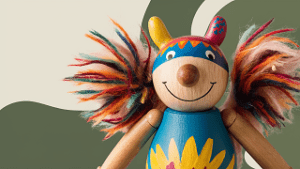
The Role of Packaging in Toy Sustainability
Packaging is another critical aspect when considering the environmental impact of toys.
Excessive packaging, often made from non-recyclable materials, contributes significantly to waste.
Eco-conscious consumers should look for toys with minimal or recyclable packaging to further reduce their environmental footprint.
Some brands have committed to using packaging made from recycled materials or designing packaging that can be repurposed or easily recycled.
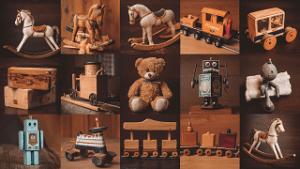
Sustainable Toy Brands
Highlighting specific brands that prioritize sustainability can guide parents in their purchasing decisions.
Companies like PlanToys, Green Toys and Hape demonstrate a commitment to environmentally friendly practices, using sustainable materials and ethical manufacturing processes.
By supporting these brands, consumers can promote a shift toward sustainability in the toy industry.

The Impact of Toy Sharing and Rentals
Toy sharing and rental services are innovative solutions to the issue of toy waste.
These services allow children to enjoy a variety of toys without the need to own them permanently, reducing the number of toys that end up in landfills.
Such initiatives not only offer a practical solution to the problem of overconsumption but also introduce children to the concept of sharing and community.
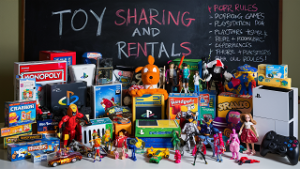
Community Engagement and Sustainable Toys
Community events like toy swaps or donations of used toys to charitable organizations can foster a sense of community while promoting sustainability.
These events encourage the reuse of toys, reducing the demand for new products and the associated environmental impact.
Engaging in these community activities can also be a valuable way for families to connect with others who share their values of sustainability and environmental stewardship.
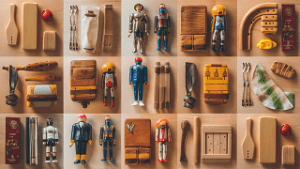
The Broader Benefits of Sustainable Toys for a Great Future
The Broader Benefits of Sustainable Toys for a Great Future
Sustainable toys offer more than just entertainment for children. By choosing toys made from eco-friendly materials and produced using environmentally responsible practices, we not only promote a healthier planet but also contribute to the development of a sustainable future for generations to come.
These toys foster creativity, encourage imaginative play and teach children important lessons about the importance of sustainability and environmental stewardship. Embracing sustainable toys is not only a smart choice for the present but also an investment in a brighter and more sustainable future.
Choosing sustainable toys has benefits that extend beyond environmental impacts.
Many eco-friendly toys are designed to be open-ended, encouraging creativity and imagination in children. They avoid the flashy features found in electronic toys, prioritizing activities that encourage deeper engagement and foster cognitive development.
Additionally, by choosing sustainable toys, parents can instill in their children values of mindfulness and responsible consumption, lessons that will serve them well throughout their lives. Sustainable Toys for a Great Future is the way to go.
Advocacy and Education
Parents and educators can also play a role in advocating for sustainable practices within the toy industry.
By voicing their preferences for eco-friendly toys and supporting legislation that promotes sustainability in manufacturing and waste management, consumers can influence industry trends.
Education about the environmental impact of toys can be incorporated into school curricula, raising awareness among the younger generation and empowering them to make informed choices.
Conclusion
The shift toward sustainable toy options in the United States reflects a growing recognition of the need to balance play and learning with environmental responsibility.
By choosing eco-friendly toys, parents can provide enriching experiences for their children while contributing to a healthier planet. The journey toward sustainability is a collective one and each choice we make can contribute to a larger impact.
As the market for Sustainable Toys continues to grow, it offers a hopeful vision of a future where playtime is in harmony with the planet’s well-being.

